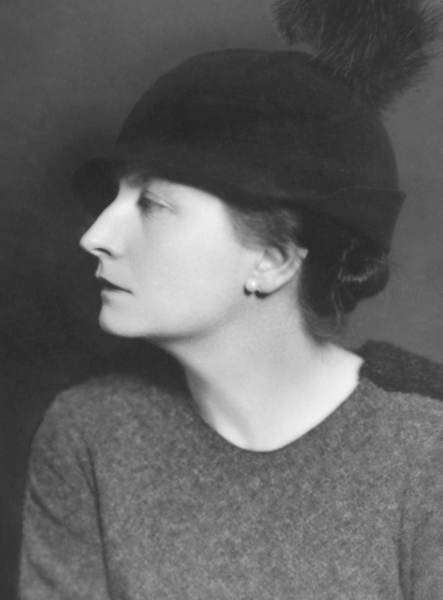Hildreth Meière (1892-1961), 1956
Hildreth Meière
Hildreth Meière (me-AIR) was one of the most renown American muralists of the 20th century. During her forty-year career from the 1920s until her death in 1961, she pioneered a modern approach to murals that broke away from academic tradition and blended such influences as early Byzantine mosaics, Egyptian wall painting, classical Greek vase painting, and Native American beadwork into a style that came to be known as Art Deco.
Working with leading architects of her day, Meière designed approximately 100 commissions, both secular and liturgical. Her best-known commissions include Radio City Music Hall, One Wall Street, St. Bartholomew’s Church, Temple Emanu-El, and St. Patrick’s Cathedral in New York. She also decorated the Nebraska State Capitol in Lincoln, the National Academy of Sciences in Washington, D.C., and the Cathedral Basilica of Saint Louis.
Known for her willingness to explore new materials, Meière designed for a variety of mediums ranging from glazed ceramic tile to mixed metal and enamel, stained glass, and marble and glass mosaic. She collaborated with European-trained craftsmen who executed her work. When commissioned to paint an altarpiece, she did the painting herself but still worked closely with the gilder and framer.
In 1928, Meière received the gold medal in mural decoration from the Architectural League of New York for her designs at the Nebraska State Capitol. The American Institute of Architects awarded Meière its Fine Arts Medal in 1956. The citation recognized Meière as a “Master of Murals.”
Meière was the first woman appointed to the New York City Art Commission. She served four terms as President of the National Society of Mural Painters, and six as First Vice President of the Architectural League of New York. She was Director of the Department of Mural Painting at the Beaux Arts Institute of Design. Meière also served on the boards of the Art Students League, the Municipal Arts Society, and the Advisory Committee of the Cooper Union Art School.
Meière prided herself on having established a successful career as both a muralist and businesswoman who “has to run a business as well as conceive and paint decorations.”1 Reliability was key. Architect Ralph Walker summed up why he liked to work with Meière:
She will take any commission you give her and work it out without any help from you--clean quality, good draftsmanship, material intelligently used. Once the job is in her hands you can forget about it, assured that it will be done right and on time.2
For a full discussion of Meière’s artistic development and career, see Catherine Coleman Brawer and Kathleen Murphy Skolnik, The Art Deco Murals of Hildreth Meière (New York: Andrea Monfried Editions, 2014).
1
Hildreth Meière, address to the Pen and Brush Club, New York, November 21, 1950, Hildreth Meière Papers, Archives of American Art, Smithsonian Institution, Washington, D.C.
2
Ernest W. Watson, “Hildreth Meière, Mural Painter: An Interview with Illustrations of Her Work,” American Artist 5: 7 (September 1941): 5.


Comments
Post a Comment